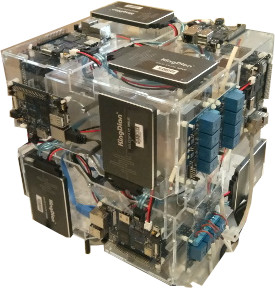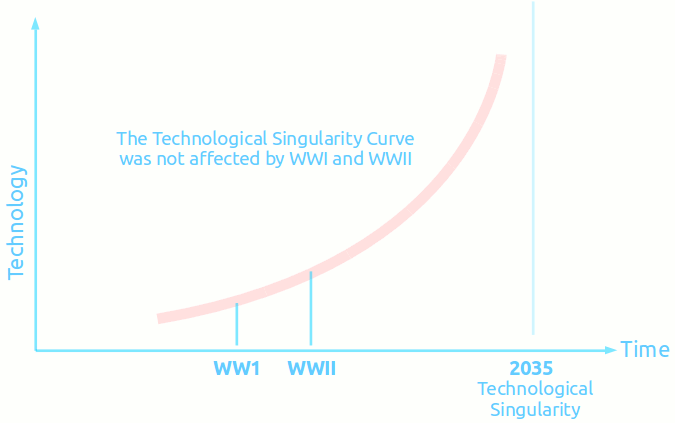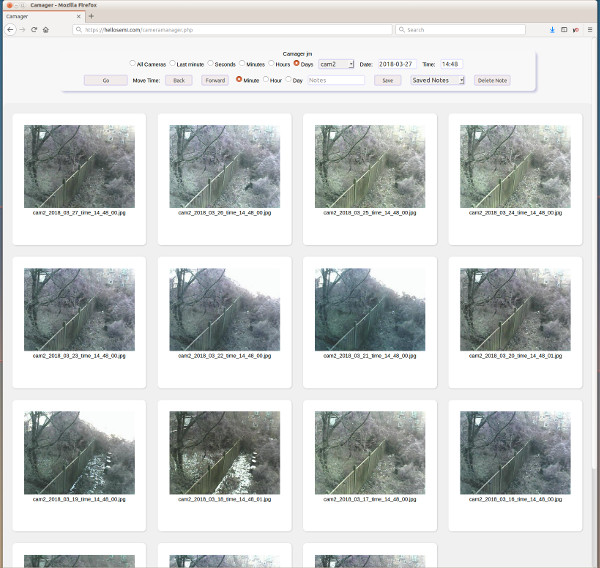|
Home Page
Six Transistor Cache
Investors
Launch Date
Contacts
Terms and Conditions
_________________________
|
Hypercube Internet Security Camera System
- The Hypercube Security Camera System takes one picture per second and uploads them into a 3D wired Hypercube Storage Array ready to recall any point in time in seconds with a web interface written in Python and PHP.

- With today's hard disks, the system can store minimum about a year's worth of pictures in a system smaller than a 1/8th of cubic meter (about the size of human belly or a humanoid robot). Smaller VGA resolution it can store up to 100 years, 1 photo every second.
- This is currently working technology that helped in an actual extremely serious crime investigation in London.
- Each picture can be taken from small USB cameras connected to a laptop, or from high definition camera such as a 5M pixel camera with dedicated SoC board to upload images to Hypercube servers. We can process 20M pixel images from mobile phones. We can process 100M pixel camera images that are able to pick out vehicle number plates and faces from hundreds of meters away. The web based software allows any picture to be viewed from anywhere in the world through the Internet. The system is good for border security, hotel security, large scale municipal security etc. With Hypercube Data Center technology and infinite scalable 3D wired servers using low energy storage (5kw per petabyte), this technology is ready to be deployed anywhere in the world.
- Imagine a system with 3000 cameras. The web interface works with any modern browser. The user would click to view all cameras, and then click the specific cameras to view, then click on relevant date, then click on hour, and then minutes and then the seconds. The whole process takes 3 minutes from start to finish with about 4 to 5 web clicks to locate any incident.
- Another way to use the web browser interface is to look at say last 14 days of a car park to track down a car theft. The system will display 4 pictures, one per day. It is easy to then determine when the vehicle was taken between. Suppose it was taken between the 8th and 9th day. Click on all pictures by the hour for the 8th day. Then get 24 pictures, one for each hour. If the vehicle was taken between 10:00 and 11:00, then click to view all the pictures by the minutes starting at 10:00. This will produce 60 pictures - one for each minute and lets say it was determined the vehicle was taken on the 24th minute. Click on 24th minute picture and get all the pictures stored for that minute displayed by the second - which is 60 pictures, one for each second. Then you can see who took the vehicle. The whole search process takes around 3 minutes to go from lets say 300 cameras around a complex to pictures of person stealing the car.
- In crowd control, imagine taking 100M pixel camera images and being able to view any of these high definition photos to pick out trouble makers who wish to hide in the crowd. It is now viable to upload 100M pixel images once every second to Hypercube Data Center that will then allow web browser access all those images in seconds. So if someone stole a bag in a crowd, this system would be accurate enough to see the bag position before it was stolen, and home in on the minutes and seconds before theft and then show who took the bag all within a space of 3 minutes of searching.
- Another use of this technology is humanoid robots that can be unleashed into society to record society as it is now. The present Hypercubes are capable of taking 1 picture per second in VGA resolution and store every picture it takes for the next 100 years. A robot with 100 years of photographic memory is easy to put together today with Hypercube Technology. Every 18 months technology doubles, so we can swap out disks without ever filling them at current pace :) We can upgrade the eyes with better resolution and choose higher frame rates as technology doubles every 18 months. These humanoid robots can walk the streets and say hello to everyone it meets. There are numerous CPUs available to process images and classify images and objects using AI which can be uploaded to a mainframe whenever interesting information is detected. The fun purpose is to allow humanoid robots to mingle with society. A more import aspect of the job is to learn human/robot interactions. Will an old granny for example ask for help carrying her shopping? If the machine is solar powered, and robotics want to get to the next level, there is good reason for the robot to help when it can. A serious purpose at all times is to record images for security.
- With the rapid approach of Technological Singularity, it is shocking that we can even think of building 100 year robots today made with 3D printers and Hypercubes without having had a discussion or spending a lot of time in deep R&D and deep philosophical introspection to plan for this future.

- Security recording robots walking among humans will remember every face that went past it and record the time. If we are sensible about its use, then we can solve all kinds of serious crime by remembering who was where. The robots can be asked to find faces to track down criminals using AI and image recognition software.
- Eventually it will become difficult to conduct wars because all those who participate from its inception from both sides may get tried for murder instead of war. The fog of war is a hiding place for every person inciting war but if you can't hide your meetings and the notes of meetings are being streamed live out in the open with cameras everywhere, then many of the participants on both sides might be guilty of plotting murder rather than organizing a war. Right now we can't think of how robots walking amongst humans would ever reach places like the war torn middle east but like the mobile phone it will arrive and record all history. The robots would start out being handy for carrying shopping, and making deliveries, but eventually they would be part of all security arrangements where no one may hold private meetings without being overheard in a nice way to prevent them from instigating something evil that eventually leads to communal violence and war. Take for example religions and the way they separate people into cast system. In some very backward villages, if one person takes water before a higher ranking cast at a well, it could lead to communal violence. But if robots are among these villagers, then it would not be possible to enforce such arbitrary rules because everyone would be recorded for their actions even in a crowd and each person instigating violence would be logged and eventually punished. So eventually each person is forced to change, and give up their evil rules, and behave like everyone else, pursue happier and most productive activities without getting distracted into bringing harm to others.
- A Dystopian view of this tech is that it would be used to control us. That would be true of any technology. But we could just as well hand responsibility for allowing use of this technology to a bigger group of people that represent whole of society, and we may then choose not allow petty crimes to be solved this way, but we will allow it to be used to solve all serious crimes.
- The biggest perceived problem with a humanoid robot walking down a main street taking pictures that it can remember for 100 years is the human robot interactions. No doubt the average 'snow flake' will see that as a threat without discussion even if every expert can be convinced it is for some greater good in the future when humanoid robots will help everyone with their daily chores. With 100 years of visual memory, it could be classed as a machine with some kind of mechanical soul and importantly it will be treated as precious because of the memories it carries. If the machine was treated like some kind of Google Street Map Camera Vehicle then it would have to delete every person's face and every car number plate it sees. What kind of world full of lies would we create if every Humanoid Robot machine had to delete its memory of all the people it had seen and all the vehicle number plates? Instead we will have to change the laws so that whatever a Humanoid Robot sees is precious recorded history, and that what you do with it must be regulated. So you should not for example take these images and be allowed to troll with it or send abuse messages with it, or use it to incite. But who know what the future holds. You may have your own personal robot to guide you every minute of the day and if you decide to use images to troll or to send abuse messages, then your personal robot would tell the whole world on you for engaging in such low behavior. So many forms of bad behavior requires anonymity but if that is taken away, then we can all relax knowing that perpetrators cannot escape punishment and find themselves banished from participating from many online systems. The Technology Singularity is arriving very fast, and in its wake it creates a vast range of new systems that will flood the globe. It would always be better to regulate people with what they can and cannot do with new technology and how much anonymity for bad behavior is stripped away as punishment than it is regulate the machines and their features. We need to avoid repeating what 'snow flakes' do to shackle new technology like what is done with Google Maps today.

- More and more cameras will arrive and contribute to safety.
- Eventually they will move into traffic control. Particularly useful are AI infused temporary controls around new junctions and road works. The system should image in infra-red as well to get understanding of overheating engines and tires. And then act in a fair way to let as many vehicles pass as is feasible. Such systems are prone to feedback loops where releasing too big a pulse or too small a pulse leads to queues. To avoid this, in theory, the junction controllers talk with other junction controllers to assess the overall throughput rates of traffic through all traffic junctions.
|



